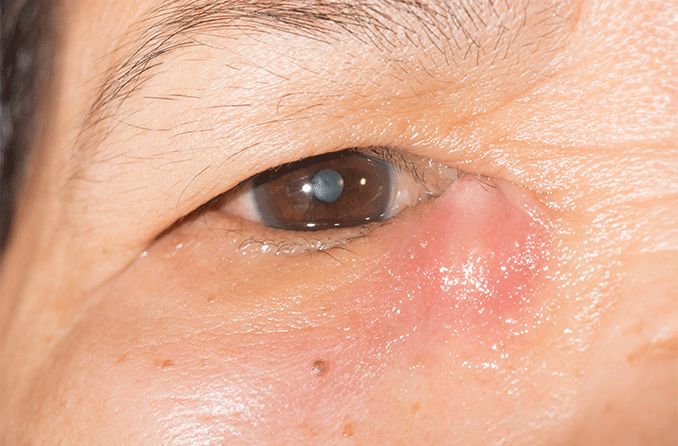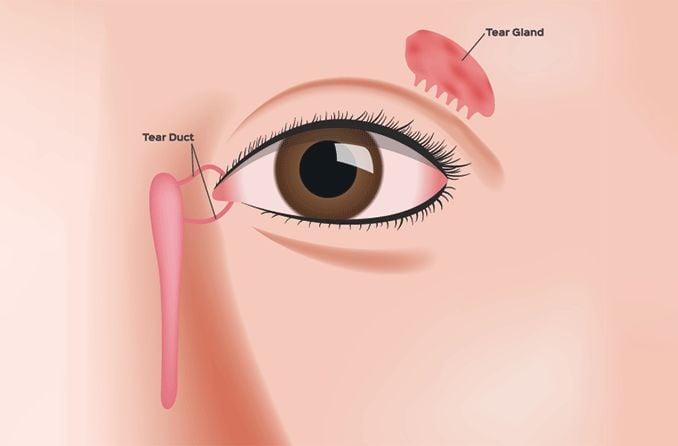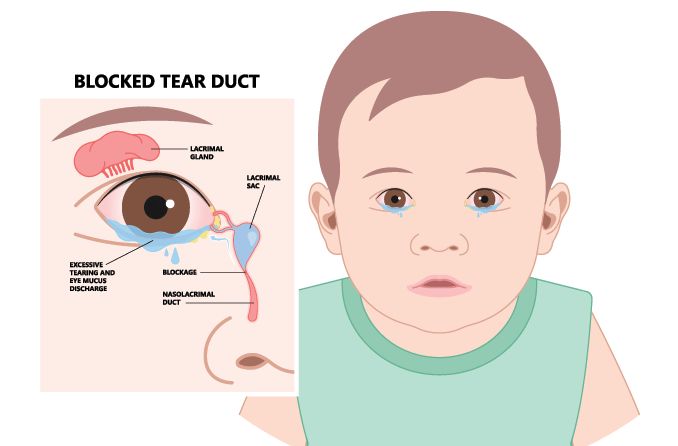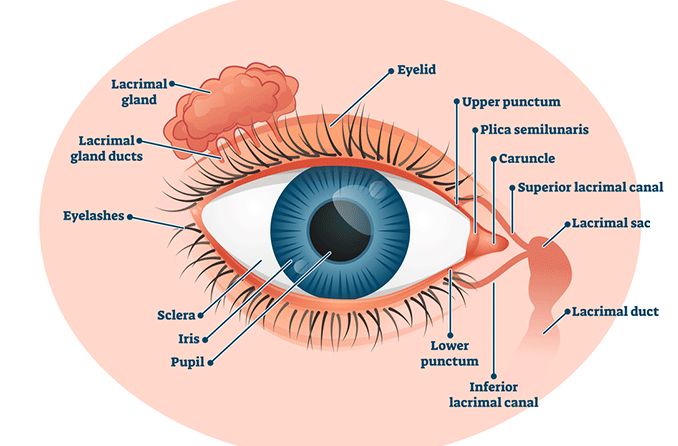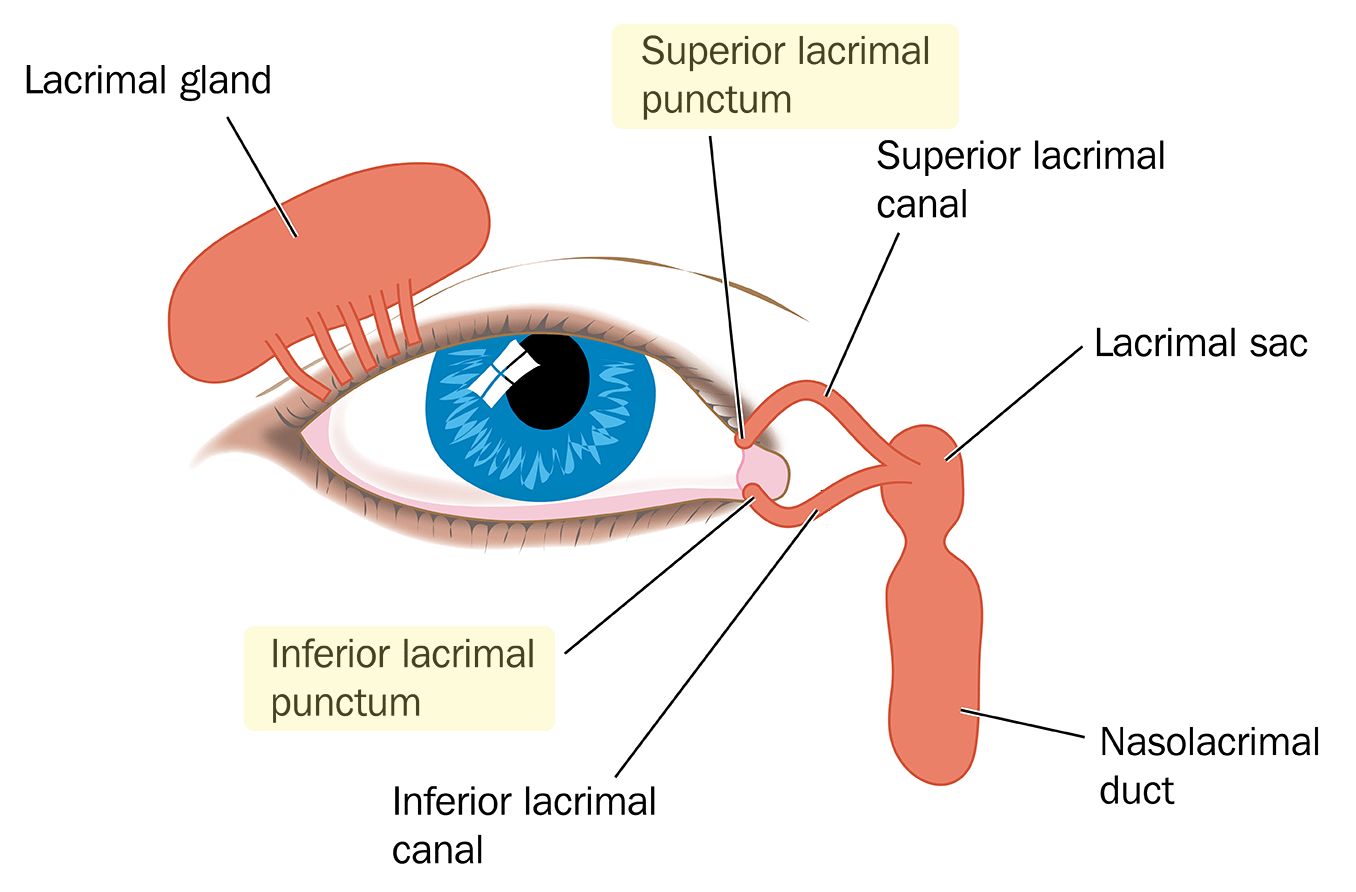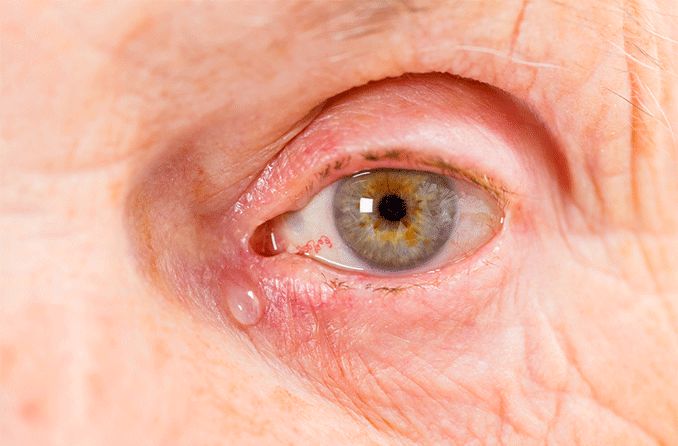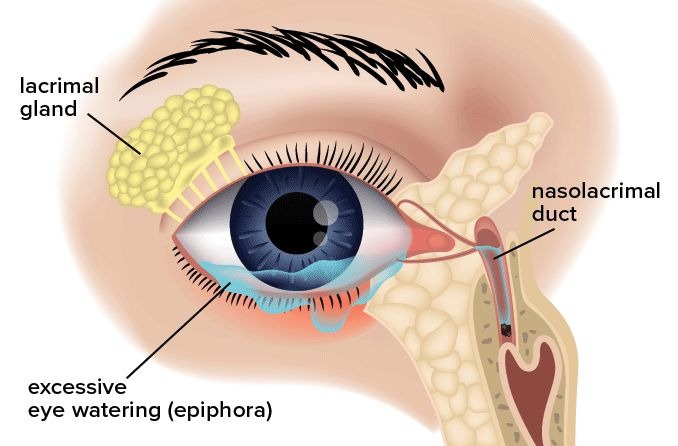What is dacryoadenitis?
Dacryoadenitis is inflammation of the lacrimal gland, the gland that produces watery tears. Lacrimal gland inflammation causes the outside corners of the eyelids to swell and become red and painful. Dacryoadenitis can happen suddenly or be a long-term inflammation.
Sudden onset of dacryoadenitis is more common in children and young adults. Long-term inflammation of the lacrimal gland is often found in people with autoimmune disease, which is more common in women.
What is the lacrimal gland and what does it do?
The lacrimal gland is located on the outside corner of the eyelid. Its function is to secrete aqueous tears that lubricate the eyes. These tears also help to wash away debris and germs.
The lacrimal gland is shaped like a tear and has two lobed parts. The bigger lobe is in the orbit of the eye. The smaller lobe is part of the inner eyelid. If there is lacrimal gland inflammation, the gland and the soft tissue around it swell and become painful.
The role of the lacrimal glands is to produce the middle aqueous layer of the tear film. Tears are essential in keeping the eyes healthy and vision clear.
The tear film has three layers:
- Outer oily layer – to prevent evaporation and provide a smooth surface
- Middle watery (aqueous) layer – to wet the eyes and provide nourishment
- Inner mucin layer – to help tears adhere to the eyes
The function of the tears is to:
- Provide a barrier of protection for the cornea
- Provide a smooth surface for clear vision
- Wash away debris
- Nourish the cornea
When the lacrimal gland is inflamed and not able to continually secrete the aqueous layer of the tear film, a form of dry eye called aqueous tear deficiency can occur.
READ MORE: Dry eyes: Causes, symptoms and treatments
What is the difference between dacryoadenitis and dacryocystitis?
To understand the difference between dacryoadenitis and dacryocystitis, it is helpful to learn about the lacrimal apparatus.
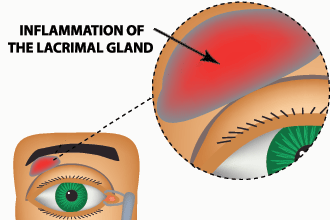
The lacrimal gland produces tears that wash and nourish the eyes. A drainage system then drains the tears into the nose. This is called the lacrimal apparatus. It consists of three main parts:
- Lacrimal gland
- Lacrimal sac
- Nasolacrimal duct
The lacrimal sac and nasolacrimal duct are located in the inner corner of the eye. The lacrimal sac is a reservoir of the tears made by the lacrimal gland, and the nasolacrimal duct drains tears from the eye into the nose.
Inflammation of the lacrimal sac (located in the inner corner of the eye) is called dacryocystitis. It is often caused by a blockage of the lacrimal duct.
Inflammation of the lacrimal gland (located on the outside edge of the upper eyelid) is called dacryoadenitis.
Dacryoadenitis is less common than dacryocystitis.
READ MORE: Dacryocystitis: Causes, symptoms and treatments
What causes dacryoadenitis?
Dacryoadenitis can be due to an underlying inflammatory condition or an infection. The risk of dacryoadenitis is higher if a person has an autoimmune disease and has been exposed to a virus or bacteria.
Viral infections are the most common cause of dacryoadenitis, especially in children and teenagers. Common types of infection include:
- Viral – Due to Epstein-Barr virus (most common), adenovirus, herpes, rhinovirus, CMV, mumps or varicella-zoster virus.
- Bacterial – Due to Staphylococcus aureus or Streptococcus pneumoniae.
- Fungal – Due to Histoplasma, Blastomyces or Nocardia.
Other non-infectious causes of dacryoadenitis include:
- Autoimmune disease – Due to Sjogren’s syndrome, thyroid disease and fibroinflammatory disorders.
- Cancer – Due to lymphoma, carcinoma or adenoma.
- Sarcoidosis – Due to the growth of inflammatory cells in the lacrimal gland.
- Idiopathic – Due to a spontaneous inflammation with an unknown cause.
What are the symptoms of dacryoadenitis?
Dacryoadenitis symptoms can occur in one or both eyes. Inflammation of the lacrimal gland can be acute (sudden onset of inflammation) or chronic (long-term inflammation). Symptoms depend on which type it is.
Acute dacryoadenitis
Sudden onset of dacryoadenitis is often due to an infection and usually occurs only in one eye. The infection usually comes from another area on or around the eye, such as the conjunctiva or skin. It is more common in children and young adults.
Acute dacryoadenitis can lead to orbital cellulitis, a serious condition that requires urgent medical treatment. It is important to see a doctor if you notice any symptoms of acute dacryoadenitis.
Symptoms include:
- Pain and redness in the upper outer corner of the eyelid.
- An s-shaped curve of the margins of the eyelid caused by an inflamed lacrimal gland.
- Possible discharge, such as pus from the nasolacrimal duct.
- Pink appearance to the conjunctiva.
- Swollen lymph nodes by the ear.
- Fever and fatigue.
Chronic dacryoadenitis
Long-term dacryoadenitis is usually due to inflammatory causes, not infectious causes. A common cause is an autoimmune disease, which occurs more commonly in women.
There is usually a painless swelling of the area above the lacrimal gland (upper outer corner of the eyelid). Because it is due to inflammation in the body, it may occur in both eyes.
Inflammatory autoimmune diseases that can cause dacryoadenitis include:
- Sjogren syndrome
- Sarcoidosis
- Crohn disease
- Granulomatosis
What is the treatment for dacryoadenitis?
Usually, acute viral dacryoadenitis goes away on its own within 4 to 6 weeks. Oral viral medications have not shown clear benefits.
Acute bacterial dacryoadenitis will require antibiotics. The doctor may obtain a culture if there is discharge to determine which antibiotic would be most appropriate.
In non-infectious chronic dacryoadenitis, the underlying disease needs to be managed in addition to treating the inflamed lacrimal gland.
What should I do if I have painful inflammation of my upper eyelid?
If you notice inflammation in the upper corner of your eyelid, it is best to see a doctor for evaluation as soon as possible. Dacryoadenitis may resolve on its own, but it may also get much worse very quickly.
The doctor will take a medical history and perform a physical exam. They may need to order laboratory tests or imaging studies. This will allow them to determine whether the cause of the lacrimal gland inflammation is viral, bacterial, autoimmune or something else. Dacryoadenitis treatment will depend on the underlying cause and how severe the inflammation is.

